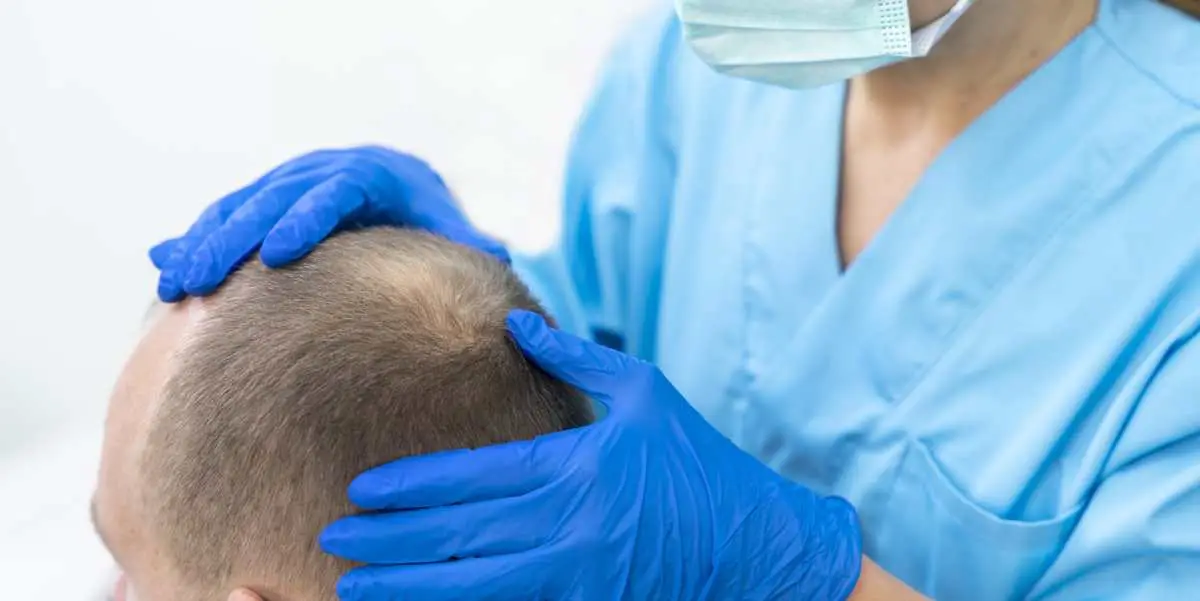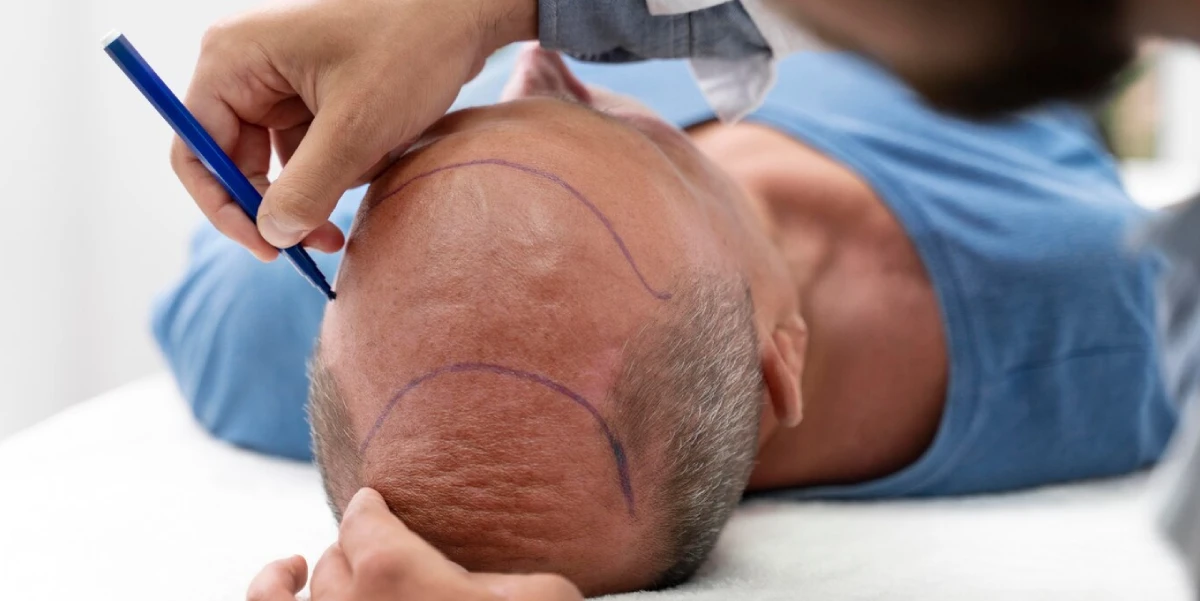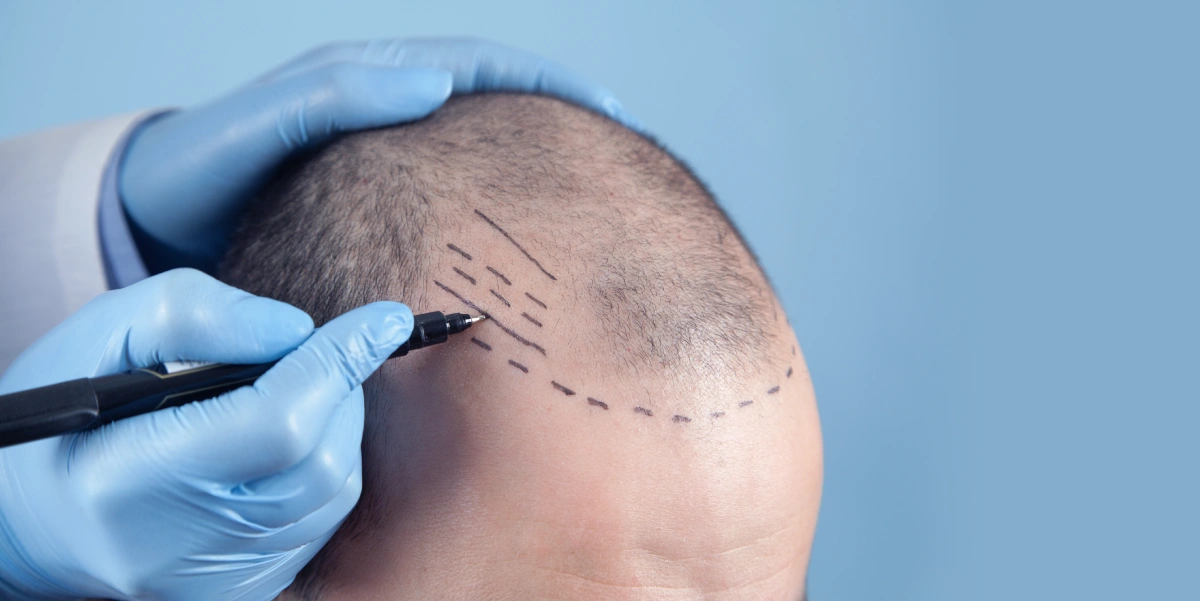Recovery & Hair Growth Timeline After Hair Transplant
- By Harleys Clinic
- Nov, 08 2023
The demand for surgical hair restoration, that is hair transplants, has nearly doubled in the last few years. The vast list of people who have joyfully acknowledged getting hair transplants to disguise their hair loss is one of the numerous reasons this surgery has gained in popularity.
Another factor is that hair transplants are less invasive than they were previously. The treatment is practically painless because it is conducted under local anesthesia and sedation. Recovery is often swift and straightforward when under the care and supervision of a qualified hair restoration surgeon and his team. Here's everything you need to know about recovering after hair transplant surgery and the hair growth timeline. Our expert hair surgeon, Dr. Sumit Agarwal, the best hair transplant doctor in Mumbai, India has shared his invaluable insights to make this blog useful and enriching.
Follicular Unit Extraction (FUE) is a popular hair transplant technique that involves removing individual hair follicles directly from the donor area on the back of the scalp and transplanting them to balding or thinning areas. The recovery time after a hair transplant varies based on the individual and the specifics of the treatment, but here's a broad summary of what you may expect:
- First Week After A Hair Transplant
The first week following your hair transplant treatment is the most essential, as well as the most unpleasant. Your bandage will most likely be removed the following day. After the third day, you can begin gently washing your hair with water. You may suffer itching or slight bleeding during the first few days. However, avoid touching the grafted region.
After 5 days, the transplanted hair grafts will become stronger, but you should still be gentle with the transplanted area. Head washing with a light shampoo can begin on the seventh day. You can choose to have your hair washed at our clinic.
- Swelling Following a Hair Transplant
Swelling is one of the most prevalent side effects that may occur following a hair transplant. It is your body's normal reaction to an injury or trauma. Even with a professional and mild surgery, some swelling on your forehead and around your eyes is possible. Fluids injected during the hair transplant procedure for local anesthesia can induce swelling in addition to the reaction of injured tissue. It is important to understand that this is a normal and harmless biological reaction.
Although it is not harmful, a little swelling may cause some pain. To avoid this, use a cold compress to the swollen area while keeping your head elevated and avoid resting on your stomach. Maintain excellent hydration and avoid exercising during this brief recuperation period.
- The Second Week Following A Hair Transplant
The wound area will dramatically recover in the second week following hair transplant, scabs will come off, and redness will fade. Continue to gently wash your hair to remove any residue or dead skin cells. Depending on your availability, your first post-operative check-up can be done virtually or in person during the second week. Hair grafts will settle in 7-10 days following your hair transplant surgery, and a resting phase will begin, during which you may have little hair loss, which is a natural phenomenon known as "shock loss."
- After 10 Days, Transplanted Hair Falls Out (Shock Loss).
Shock loss is a normal natural phenomenon that occurs during the growth, transition, and resting periods of hair follicles. The shedding time refers to the resting phase. Due to surgical stress and the hair follicles natural mechanism of self-preservation, hair follicles enter the resting phase after a hair transplant.
Shock loss is not a cause for concern because it is a natural element of the hair follicle's lifespan. The length of this telogen period varies from person to person. It normally lasts up to 2 months, with regular hair growth visible after 3-4 months.
- 3 Weeks Following A Hair Transplant
You may still be experiencing shock loss 3-4 weeks following your hair transplant. Swelling and scabs should be nearly gone after 3 weeks, and redness around your hairline should fade dramatically. You can begin exercising, but take it slowly and keep an eye on your body, especially the operated region.
- 1 Month Following A Hair Transplant
Hair growth following a hair transplant is a lengthy procedure. Throughout the months following your surgery, you will notice both small and substantial changes. Each month will see distinct changes, eventually culminating to the full head of hair you've been hoping for.
You may be in the most severe phase of shock loss one month following a hair transplant treatment. Even though patients may experience anxiety during this time, keep in mind that this is perfectly normal and expected!
- 2 Months Following A Hair Transplant
During the second month, shock hair loss will progressively diminish and fresh hair growth will be visible. Hair growth rates can be inconsistent and uneven. Hair that did not fall out during the shock loss period normally begins to grow long.
- 3 Months Following A Hair Transplant
Significant hair growth may be noted in the third month following your procedure. However, be cautious of blisters and infections produced by elevated and sensitive skin. Blisters are often easy to treat, whereas infections may necessitate the use of medication.
- 5 Months Following A Hair Transplant
After 5 months, hair growth has reached its highest stage. Every day, the density of your hair grows thicker and more voluminous. Coverage can reach up to 80%.
It is recommended that you comb your hair with a wide hair brush and trim or shave your hair to remove any abnormal hair strands. Even if everything is similar to natural hair development, you must be cautious not to expose your hair to severe hot or cold temperatures. A post-operative check-up might be scheduled at the end of the sixth month to monitor progress.
- 1 Year Following A Hair Transplant
After a hair transplant treatment, you can expect to see the desired results in 12 months. At this point, the transplanted portions have almost completely recovered. You can now confidently enjoy a healthy-looking, dense head of full hair. You can style your new hair growth as you want and use whatever styling products you want.
Your final clinic check-up will be arranged a year after your hair transplant surgery to ensure that your targeted outcomes are met. Make sure to follow your surgeon's recommendations for the future period and how to best care for your new hair.
Conclusion
The Harleys Clinic is delighted to state that we are here with you as your partners in hair transplant procedure as well as the journey it follows. We are the best hair transplant clinic in Mumbai offering the greatest and natural outcomes. We want you to be happy with the results for years to come, therefore we recommend that you visit our hair surgeon, Dr. Sumit Agrawal, to check what your journey will look like.
We at Harleys Clinic will encourage you to adhere to the post-hair transplant specific plan. Visit Harleys Clinic to discover more about hair transplant or hair transplant cost in Mumbai. You can have a better idea by seeing our hair transplant reviews and viewing our hair transplant before and after photos. Let's get started on your baldness-fighting journey. Harleys Clinic will help you regain more than just your hair; it will also help you regain your confidence!






